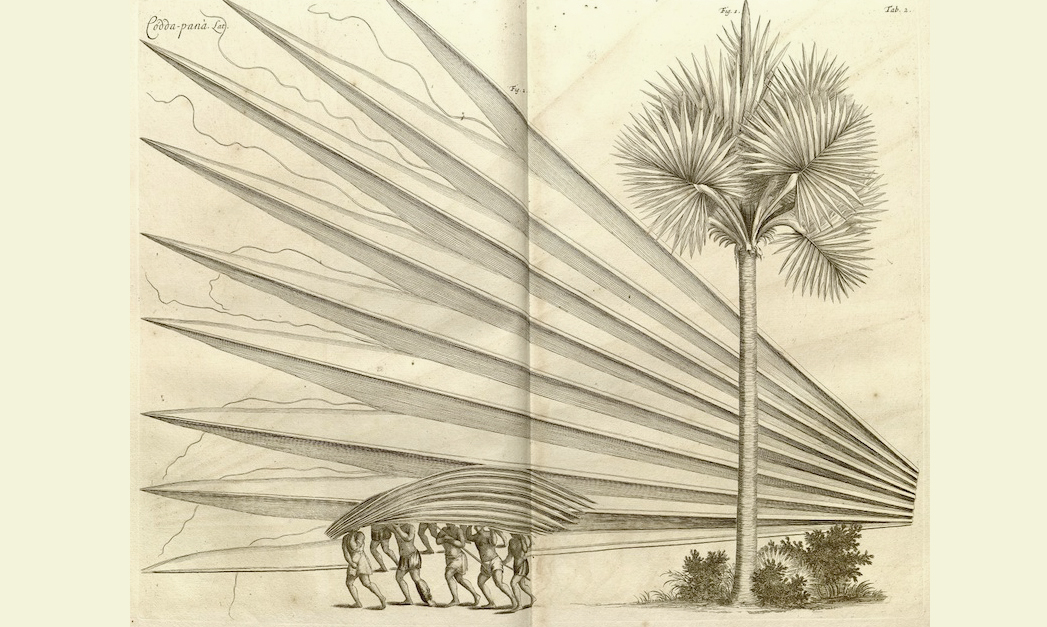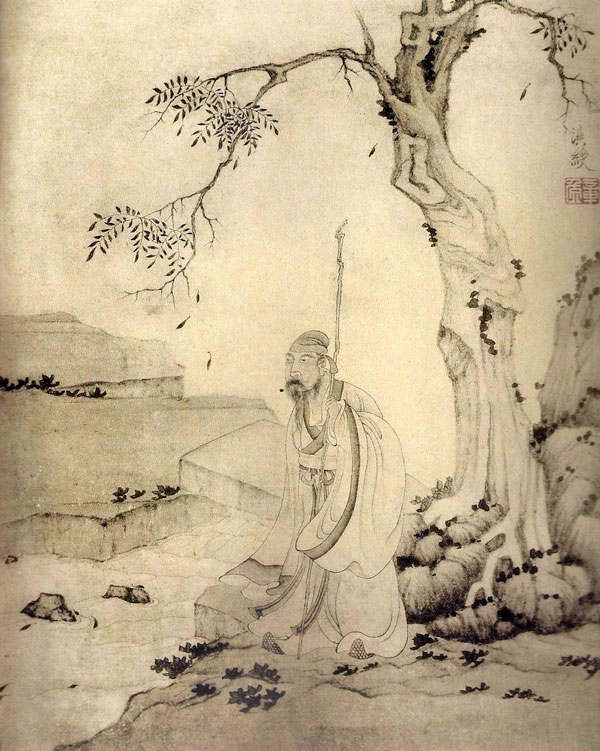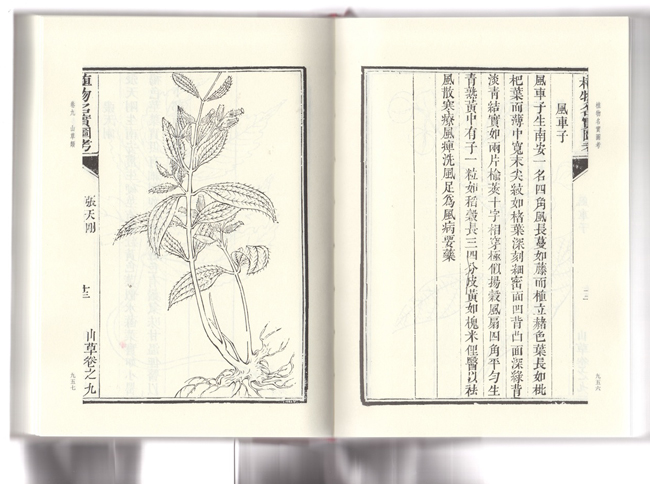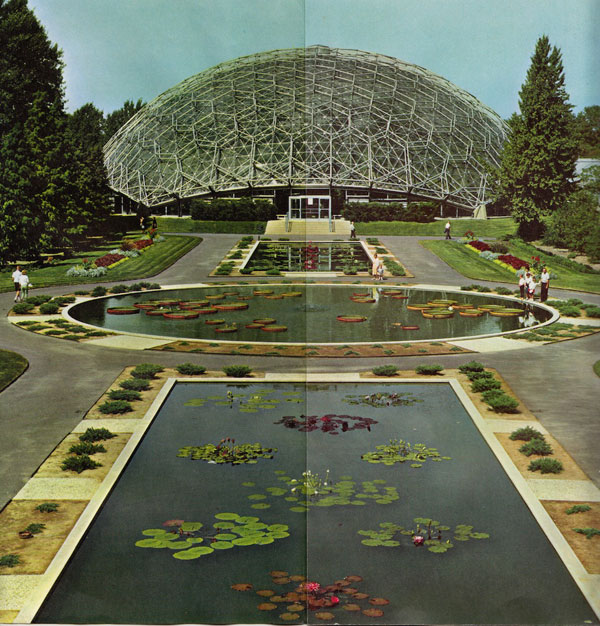— Why We Look at Plants, in a Corrupted World
Translated from the Chinese by Andrew Maerkle

1.
If I could share the agony of someone in a vegetative state, I wouldn’t try to write about it, friends. I would stay silent for my plant person.1A literal translation of the Chinese zhíwùrén, referring to someone in a vegetative state. —Trans.
It’s just that at a certain moment in the interactions between the world and my involuntary nervous system, I enter the plant person’s world, and my nerves gradually overflow the Yŏng Quán (Gushing Spring, Kidney 1), Fēngchí (Wind Pool, Gallbladder 20) and Zhàohăi (Shining Sea, Kidney 6), spilling past the Chéngfú (Hold and Support, Bladder 36), Yīnmén (Gate of Abundance, Bladder 37) and Tiānzhù (Celestial Pillar, Bladder 10) to reach the limits of human perception.2 The "involuntary nervous system" is also known in Chinese as the zhíwù shénjīng, or vegetative nervous system. —Trans.
The crowd keeps murmuring around me, but I no longer clearly hear what they say. I no longer care what they are saying. The moment my involuntary nervous system overflows, I am staring intently at the gaps between people pressing into the subway, where myriad silver sprites are flying about. These sprites are nothing special, but are so dense that my eyes swell from the light when they gather together. The train passes through a tunnel, the doors open and shut, and for an instant I think I see my body floating above the crowd like a meteorite entering the atmosphere. It is undoubtedly this incandescence that will birth me with its burning gasses oxidizing into crystals, with its scorching cinders forming me.
The moment consciousness takes me, I struggle and contract, until finally it is clear why, one day, in the heat of the Earth's core, a botanical root system will be born whose power is diametrically opposed to that of heat, so that from amid the fire's violence its roots will seek out water, in turn reclaiming the aridity of the Earth. Their joy will radiate from branches and leaves glistening with fresh morning dew, and surge out from the tension of gravity and sunlight, while they live through their existence by means of silent acceptance, until at last, on the already reclaimed crust, humans, born as animals, will gradually come to cherish their own existence as plants.

2.
Looking as a means of attachment.
Me, and you, and her.
Before the division, or after.
Why do we look at plants? Maybe it’s precisely because we schizophrenics no longer have any way to return to the embrace of plants. The prehistoric plants spawned all life on earth. They spawned us.
Before the division, the voluntary and involuntary nervous systems were closely associated with each other, constituting the first meridian of the sensory world, itself viewed by the Chinese as an organism in which yin and yang are integrated.3 The "voluntary" nervous system is also known in Chinese as the dòngwù shénjīng, or animal nervous system. —Trans.
Through the forests, toward the North Pole, we can almost pass through the tunnels of time to where the earth has not yet been turned to soil. There it exhibits the state of the proto-forest, where polar lichens humbly prostrate upon the ground, although wherever they are, there are sure to be hidden currents seething below.
There is never a moment when plants are not moving—a movement which, from the viewpoint of humanity, seems to progress through inertia, producing a timeline completely different to that of animals.
Anyone who sows seeds would deeply experience the hope promised by time: the future that starts from a single seed.
Anyone who slowly dissolves into the forest at night would believe that the legends of destiny are already inscribed into the body of the plant, which uses growth rings, scent, its own form, and the dirt in which it dwells to write history—a history that distantly echoes that of the earth’s boiling core.
Perhaps awed by the power of this night writing, humans produce poems and literature about plants, images of plants, social metaphors about plants. By means of anthropomorphosis, we adopt the wilderness. We turn plants into the mirror image of culture in order to dispel their mysterious, voiceless power.
Just as one’s pulse registers the changing of the seasons, if we say that looking, like meditation, is an ancient technique based on bodily senses and the creation of the knowledge of the world, then looking, while surviving the night, does not only mean that humanity must wait patiently. It also means we get to see the arrival of daybreak. In this way, looking is a kind of calm before the storm, like the quietude of ancient warriors preparing for battle.
It is only when we consider looking to be a technique for survival that we can grasp how looking at plants means becoming immersed in the world of the other, and without intruding. Looking is the reconciliation of divided existence, an exercise in survival manifesting as the searching of the world by the sensory apparatus.
Looking, by means of humble contemplation, allows us to enter into a dimension shared with plants. Once there, we do not willingly part with each other.
Regression, through means that predate the division between voluntary and involuntary nervous systems, might appear backward to some. But for the sensory apparatus, with its exceptional sensitivity and resilience to heat, humidity, and energy conversion, looking at plants is a quiet pleasure, a fragile conviction—it provides sufficient reason for living in a corrupted world.

3.
The creation of botanical gardens is perhaps similar to that of zoos, in that the botanical garden is proof of humanity’s collective corruption. We have been documenting the disappearance of plants while generating an aesthetics of disappearance: humans appreciate the plants in a botanical garden or park for the value of their beauty and rarity.
There is another extreme: contemporary plant products used for treating and nourishing humanity are actually related to industrialization. Few of their ingredients come from the wild—most are the product of mass cultivation on the assembly line of green products. By way of commodity circulation, contemporary plant products have become a monument to the circulation of species, commemorating the fact that they have not yet vanished from humanity’s field of vision.
Most of the effectiveness of contemporary plant products has probably evolved from humanity’s endlessly accumulating projection of emotion over a long historical process, but there is no way to alter the plant’s current destiny of being consumed. From this we can understand why contemporary plant products are always packaged with especially lifelike images of plants, always duplicating to the utmost level the corresponding colors and fragrances, so that humans have gone from looking at plants to looking at likenesses of plants, which are used to continuously invoke the vitality that the plants themselves possessed before they were picked, processed, and fabricated.

If we take ancient survival wisdom (of medicinal plants, for example) as a starting point and continue through to today’s secret formulas for profit, the history of plant products itself interrogates the evolution of biopolitics: What is it that permeates our bodies, molds our life experiences, forms our perceptions of the world? What is it that can truly save us from our calamities, without our life become one of consuming false goods?
Plucking a leaf, and repeatedly chewing it as a giraffe would, you recall how plants enter the human body. Stroking a plant, you are impressed by how such a peculiar connection arises between its own anatomy and that of a human. Plants, as well as the scenes and memories we associate with them, will constitute part of the unfinished manuscript of anthropology. How might we write, through innumerable creases in the foliage, the remnants of the forest, the wastelands of the city, our current methods for coexisting with the world?
×


